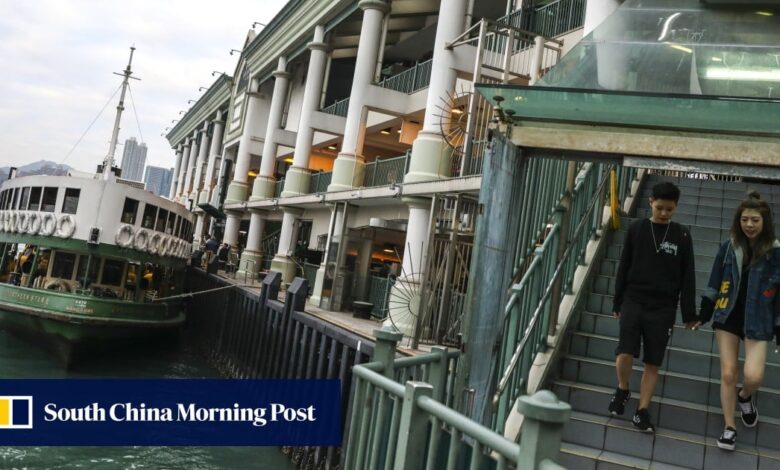Weddings, alfresco dining and music: Hong Kong’s Star Ferry lays out vision for pumping new life into piers

[ad_1]
Hong Kong’s financially struggling Star Ferry has proposed further relaxing restrictions on commercial activities at its piers in Central and Wan Chai to create fresh sources of revenue and help the government’s push to revive the nighttime economy.
The company told the Harbourfront Commission on Friday the two piers were underutilised because of the restrictions and had become less alluring for residents seeking leisure spots by the water following the development of promenades along the shoreline from Kennedy Town to North Point in recent years.
“Star Ferry believes that the granting of commercial concessions should have a dual purpose of generating non-farebox income to improve its financial situation and promote public participation in the harbourfront,” the company said.

The company estimated that its proposed changes could annually generate HK$800,000 to HK$1.5 million (US$102,300 to US$191,810), which could go towards subsidising its ferry services.
In its request made February last year, Star Ferry pointed to more than HK$85 million in losses racked up since 2020 as the Covid-19 pandemic hammered the economy. The company owed banks more than HK$72 million as of last year.
The government earlier granted the company commercial concessions at designated areas of the piers, but the activities were subject to certain conditions.
Hong Kong’s Star Ferry to raise fares by up to 56 per cent amid financial woes
Hong Kong’s Star Ferry to raise fares by up to 56 per cent amid financial woes
One area spans 2,583 sq ft between Central pier seven and eight, where the company hopes to host various events, ranging from holiday markets to cultural and music performances.
The other area is the 6,350 sq ft observation deck at the pier in Wan Chai, which the company said was an ideal location to host performances, weddings and alfresco dining, without creating disturbances to the public.
“The current limit of 60 event days per year and restriction of commercial use to two out of four designated areas per day have greatly limited the types and duration of events that can be held, thus hindering the business prospects of Star Ferry,” it said.
The company also submitted other suggestions for revitalising its piers, ranging from upgrading the facilities and reconfiguring the layout of the one in Central to a redevelopment of the 65-year-old one in Tsim Sha Tsui.
The revamp would maintain the current two-level design but add floor-to-ceiling windows, a public viewing deck on the second floor and an escalator.
Hong Kong’s Star Ferry aims to keep going with fare review, new pier attractions
Hong Kong’s Star Ferry aims to keep going with fare review, new pier attractions
Ivan Ho Man-yiu, chairman of the Task Force on Harbourfront Developments on Hong Kong Island under the commission, said the group’s members largely welcomed the proposal but hoped the company would put forward a more ambitious vision
“The context is very different as compared to a decade ago because harbourfront public spaces are no longer scarce, and we wish the proposal could help the pier generate synergy with other public spaces, making the harbour more vibrant and inclusive,” he said.
“However, we did hope they could engage some professionals and develop a more comprehensive proposal, instead of simply applying to lift the restrictions on commercial activities, though they are short of resources to do so.”
The pier facilities, including the design of the stairs and the lifts, also needed to be made more user-friendly, he said, while acknowledging they were government assets.
Francis Lam Ka-fai, a surveyor on the task force, said stronger ties with other harbourfront stakeholders, including the commission, the Maritime Museum at the Central Pier, as well as the Observation Wheel, would benefit the company.
“This can be a step forward,” Lam said. “They are unable to invest too much due to financial restrictions and the government rules, but at least these initiatives could bring some energy to the pier and pave the way for more possibilities in the future.”
[ad_2]
Source link






